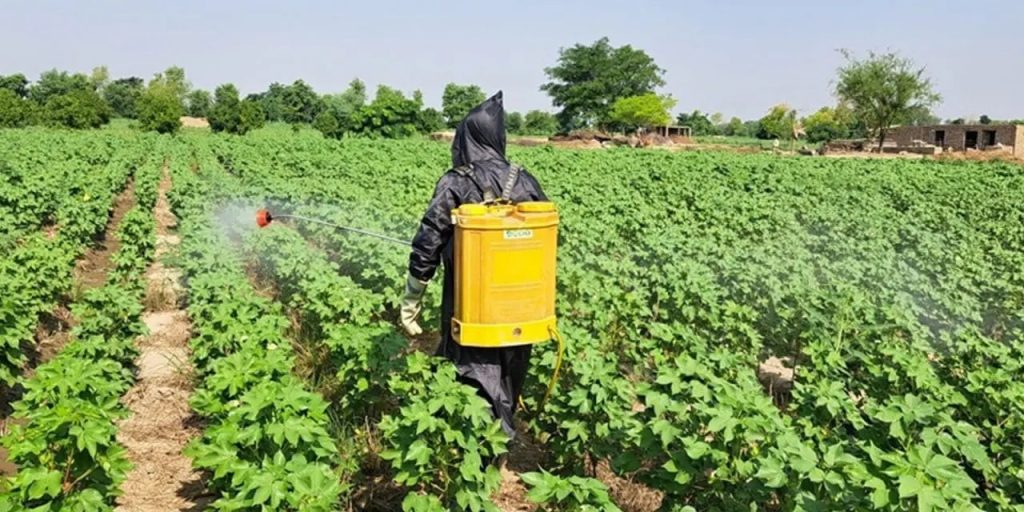
Carlos E. Bográn, Ph.D.
Phytotoxicity, derived from the Greek word Phyto (meaning plant), and toxicity is a temporary or long-lasting effect of a compound on plants. Many types of compounds may cause
phytotoxicity, including pesticides, fertilizers, plant growth regulators or contaminants. The injury by the toxicant causes stress on the plant or a reduction in vigor, aesthetic value, plant marketability or all the above. Any and every chemical applied to plants has the potential to produce phytotoxicity symptoms, but this article focuses on pesticide-induced phytotoxicity.
How phytotoxicity happens
The application of pesticides may cause phytotoxicity in certain situations. Even when the pesticide is used properly, it may be applied during harsh or adverse environmental conditions, such as periods of high air temperature (at or above 90F/32C degrees) or high relative humidity (≥ 85%), when the pesticide solution doesn’t quickly dry on the surface of the plant. In most cases of phytotoxicity, however, the pesticide is applied improperly in terms of concentration, water volume or the plant health status.
Young seedlings and plants under any type of environmental stress are much more sensitive to pesticides. Application drift also may lead to phytotoxicity when the pesticide spray, dust or vapor moves with the air currents from the target crop area to areas with sensitive crops. The same can happen with application runoff when the pesticide leaches and moves from the target crop location with irrigation or rainwater.
Pesticides also may cause phytotoxicity if they accumulate in the soil or on the plant tissues after frequent and repeated applications. Application instructions on the pesticide label must be read and carefully followed to avoid or reduce the risk of crop injury by phytotoxicity.
How do you know it’s phytotoxicity?
Symptoms of phytotoxicity include leaf speckling, leaf margin browning (necrosis), foliage yellowing (chlorosis), leaf spots or discolored patches, leaf cupping, twisting or curling, stunted growth and even premature leaf drop (defoliation). Diagnosing phytotoxicity is often difficult because similar symptoms may be caused by other factors, including plant diseases. However, there are certain clues that may help to distinguish them.
Symptoms of phytotoxicity are often limited to the foliage present during the pesticide application (not in the new growth and foliage). Often when there’s a pathogen present, symptoms progress in time and develop in the new tissues and new areas of the crop. With phytotoxicity, symptom development and severity match application patterns and timing; whereas with diseases, there’s often a random or spotty pattern of symptom development.
Commonly, there’s a uniform spatial distribution of the symptoms on plants injured by phytotoxicity and these plants often recuperate (grow out of it), and the new growth and foliage may cover the injury. Care must be taken not to confuse phytotoxicity with mechanical or physical damage to the plants during propagation or production that also may leave a uniform distribution pattern on the crop.
Risks for phytotoxicity
Factors that influence the risk of phytotoxicity include the pesticide, its formulation, application rate and frequency of application. Some formulations, like those including oil components, may be more prone to cause phytotoxicity than water-based formulations. The plant species and even the variety also may influence the risk of phytotoxicity. Herbaceous flowering plants are typically more susceptible than woody perennial species.
The age of the plant also may influence risk; young seedlings are much more susceptible to any chemical than older, more mature plants. Special care must be taken when plants are blooming, as flowers are more tender and susceptible to phytotoxicity than vegetative plant tissues.
Finally, environmental conditions, in particular temperature and relative humidity, may influence risk of phytotoxicity. Extreme temperature conditions, especially on bright sunny days or days with high relative humidity, delay drying time after applications and are very often associated with cases of phytotoxicity.
Many pesticide labels include general statements indicating it’s the responsibility of the end user to test the products in a small set of representative plants or include a short list of crop varieties that have shown susceptibility to phytotoxicity in certain situations. To avoid or minimize phytotoxicity risk, the product label is really the first line of defense, just like it is for effective and safe use of the product. Know the pesticide properties, including water solubility, pH stability and any use restrictions. Choose the right equipment and calibrate it to deliver only the pesticide that’s needed for the job—not more and not less. Applying less than the recommended rates may reduce the risk of phytotoxicity, but may increase control failure and pesticide-resistance risks. Always check on the application technique to make sure the job is done right, without waste or double treatment.
There are really no good solutions to phytotoxicity issues; prevention is the key. In some cases, washing off or leaching pesticide residue may help minimize effects, but in most cases, once symptoms develop, there’s no turning back. Consider pruning damaged foliage to improve the aesthetic value of the affected crop.
Consider alternative non-chemical solutions to pests and diseases to minimize the need for “curative” pesticide applications that may carry additional risk. Use good growing practices to minimize or avoid plant stress that contributes to phytotoxicity risk, and learn from errors or mistakes by keeping good records and growing notes for each variety.
Best management practices to minimize phytotoxicity are:
• Don’t apply a pesticide to stressed plants or under extreme weather conditions. Apply between 6:00 and 10:00 a.m. in most cases.
• Don’t apply under conditions that will delay drying of the treated foliage.
• Wettable powders are generally safer than emulsifiable concentrates (EC); inert ingredients like solvents may be more toxic than the active ingredients.
• Avoid spray tank mixtures unless previously tested; avoid mixing with fertilizers.
• Test on a few plants before crop-wide applications; damage is usually evident within a week after treatment.
• Study the label!
Dr. Carlos Bográn is Senior Technical Manager for OHP.
Source credits: https://www.growertalks.com/
